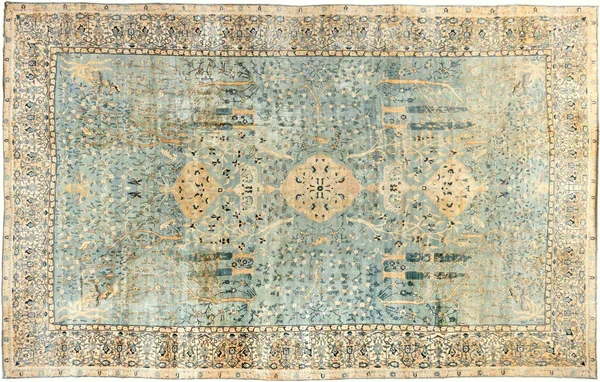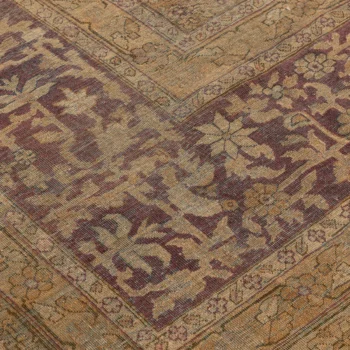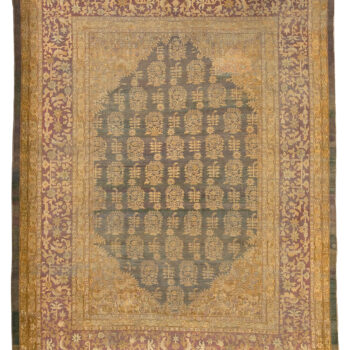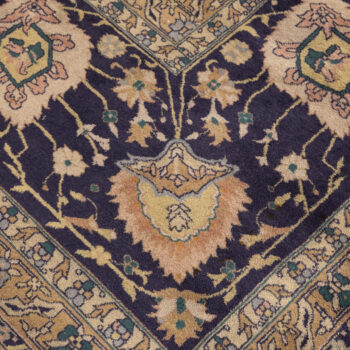Agra
Agra, famed for the Taj Mahal, has a rich carpet-making tradition. Agra ateliers have crafted exceptional antique carpets, celebrated for their artistry and finish. Unlike modern “Indian” rugs, antique and semi-antique Agra carpets are highly sought after, ranking among the finest oriental carpets.
The pinnacle of 19th-century antique Indian carpets were crafted in Amritsar, north of Agra. These carpets are lauded for their extraordinary art, lustrous wool, artistic designs, and perfect colour combinations. Antique Amritsar rugs, especially those featuring well-defined, spaciously arranged “paradise” themes, are rarely found and highly prized for their grandeur and decorative impact.

Carpet weaving in Agra dates back to the Mughal Empire’s establishment in 1530. The Mughal emperors, profoundly influenced by Persian art and culture, aimed to emulate the Persian court’s beauty. The resulting “Mughal” carpets were creative masterpieces and precursors to today’s antique Agra carpets.
In 1584, the third Mughal emperor, Akbar the Great, established his capital in Agra, where his grandson, Shah Jahan, later built the Taj Mahal. Records from Akbar’s reign attest to the court’s patronage of antique carpet weaving, with Persian craftsmen invited to India to help establish the carpet industry.
Agra carpets blend the grandeur and beauty of renowned antique Persian court carpet designs with motifs symbolic of Indian culture. Persian spiral vine designs often combine with small animal figures, including birds, elephants, lions, or humans. A famous Agra carpet design for the Mughal emperors consisted of rows of flowers in pots, a design later adopted by the Persians.

Agra weavers, masters of vegetable dyeing, developed a unique colour palette, including soft blues, a profusion of gold, a range from rust red to pink, and a lavender shade not found in other carpets. These colours lend Agra carpets a light, ethereal appearance that leaves a lasting impression.
While early 20th-century Agra carpets often lack the quality and inspiration of their predecessors, the finest 19th-century antique Agra carpets are universally admired by collectors and interior designers. Considered exceptional works of art, their delicate use of colours and design is unique among antique rugs. Undoubtedly, the cream of 19th-century Agra carpets will continue to be an excellent art investment.


Figalli Oriental Rugs
We do not sell rugs. We bring rare works of art to your home in the form of rugs.
Our services
You are Protected
Copyright © 2023 Figalli Oriental Rugs, All rights reserved. Desenvolvido por Agência DLB – Agência de Marketing Digital em Porto Alegre






